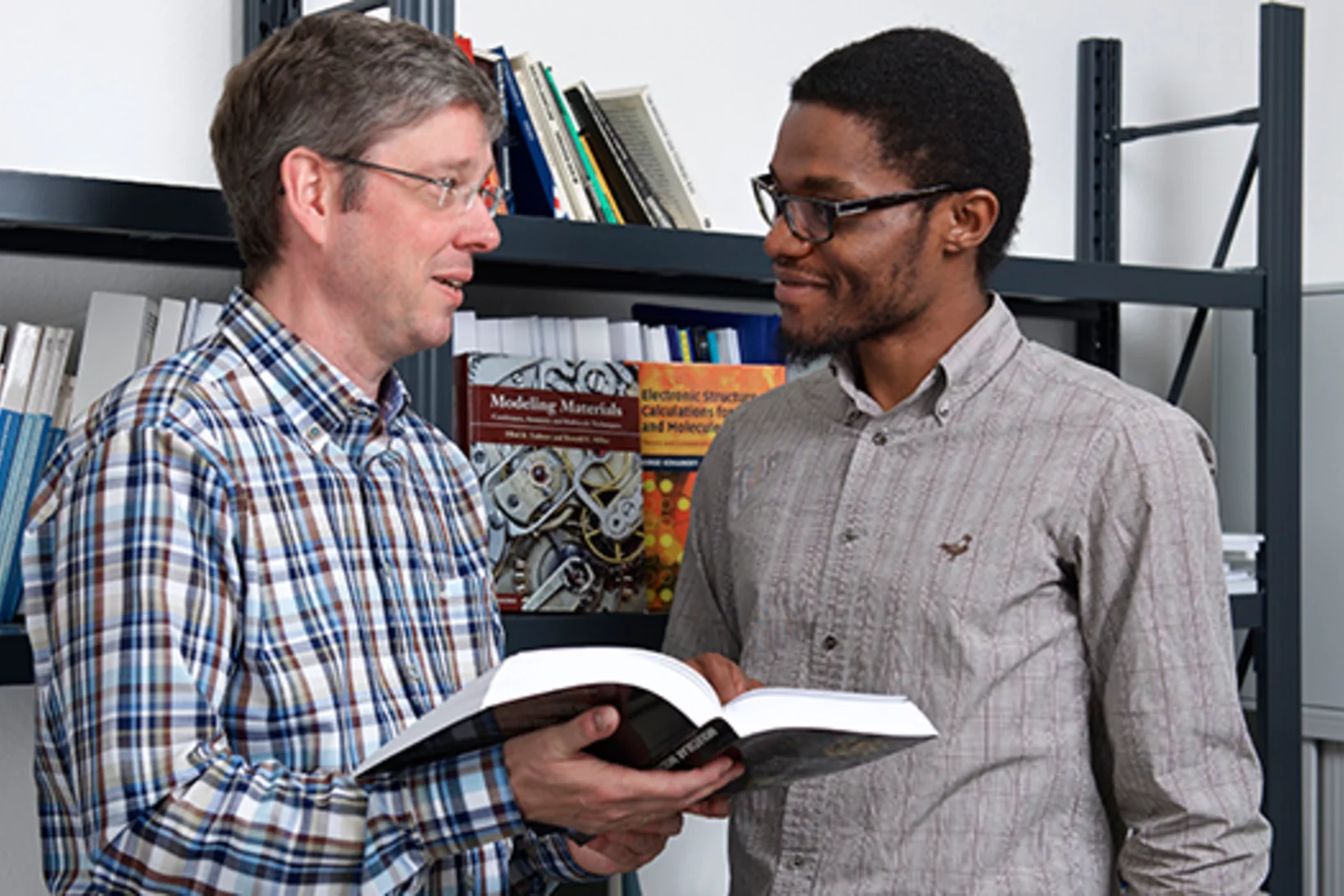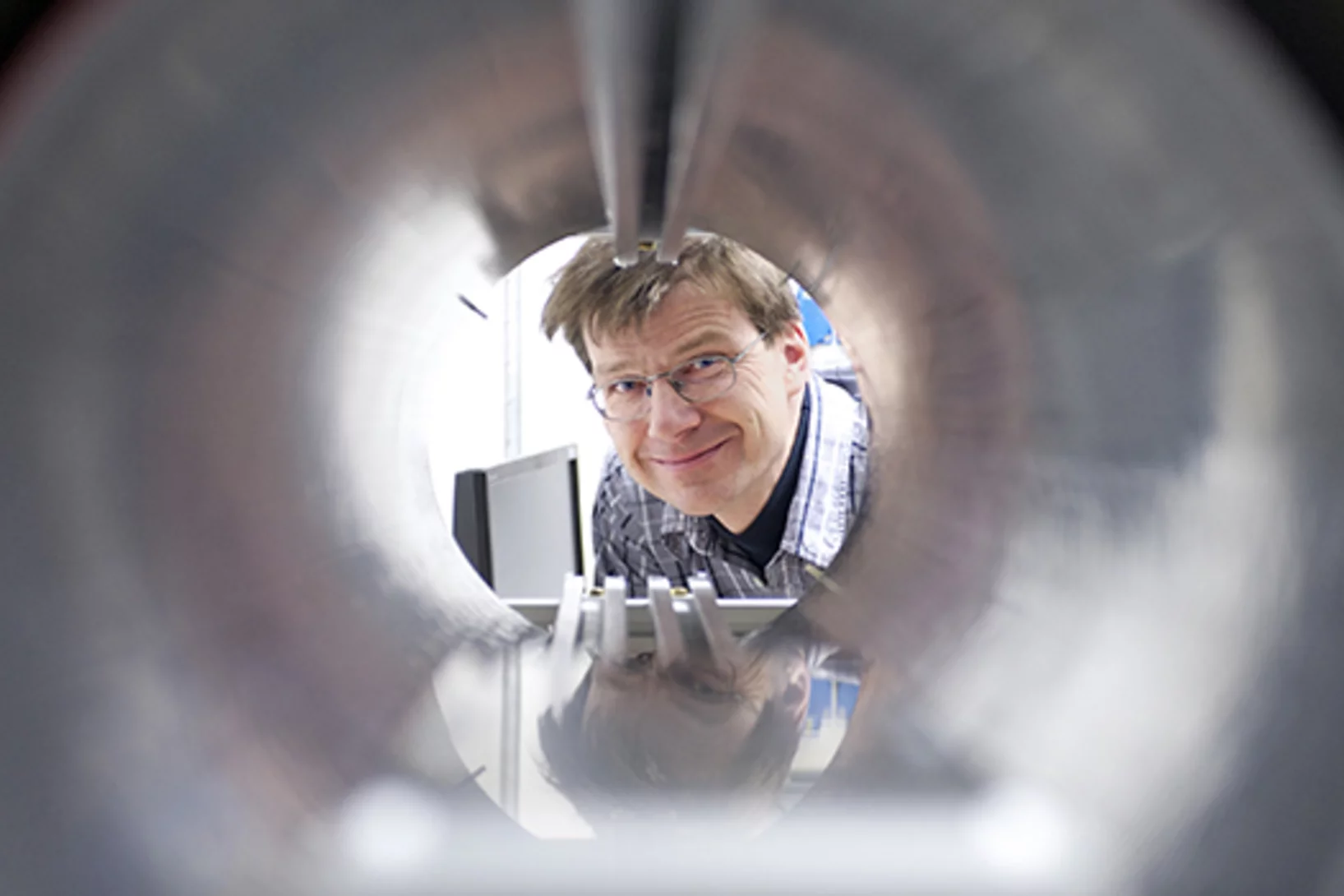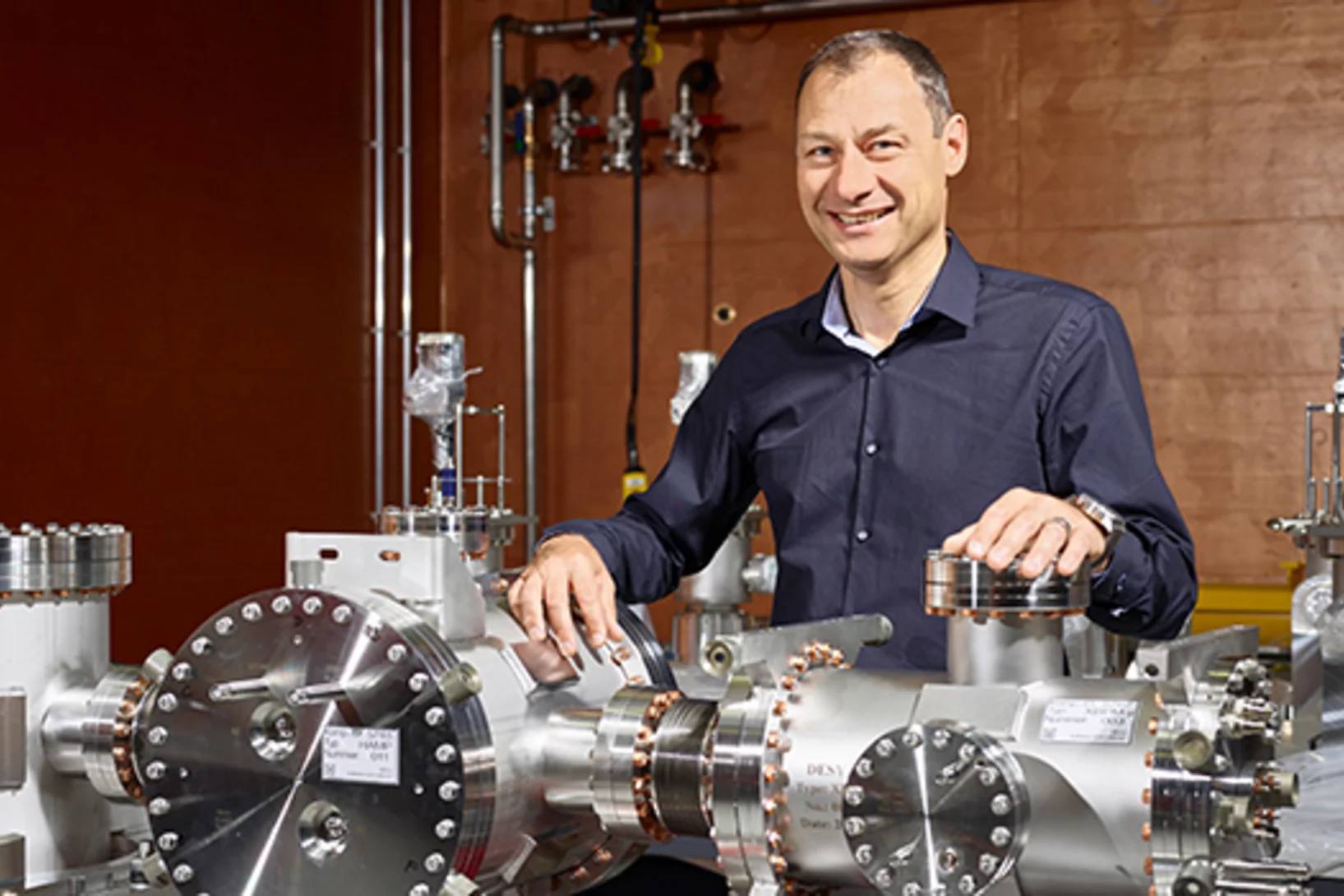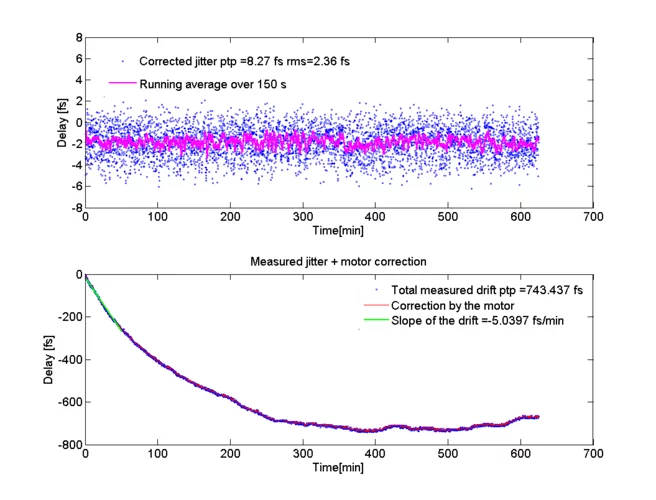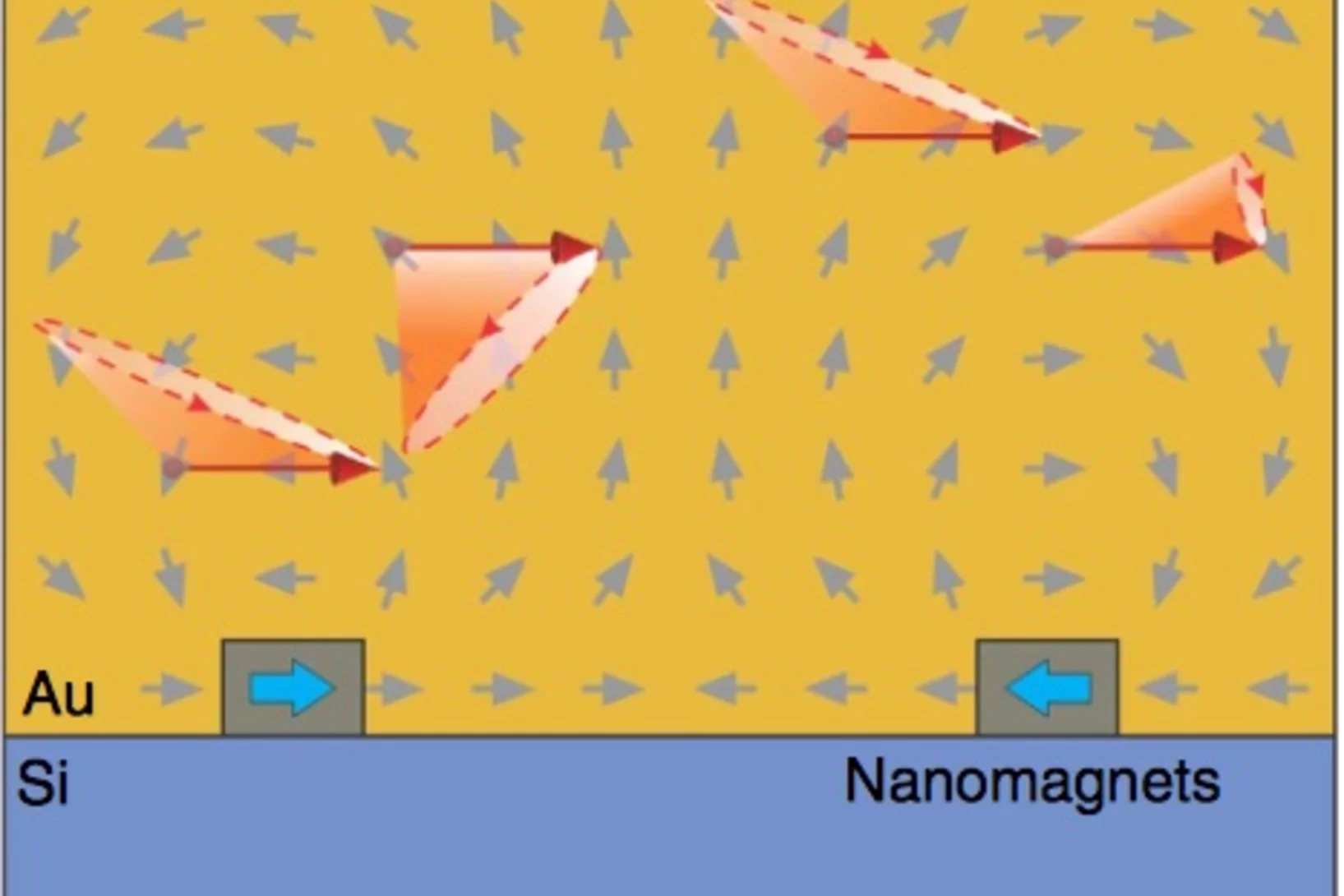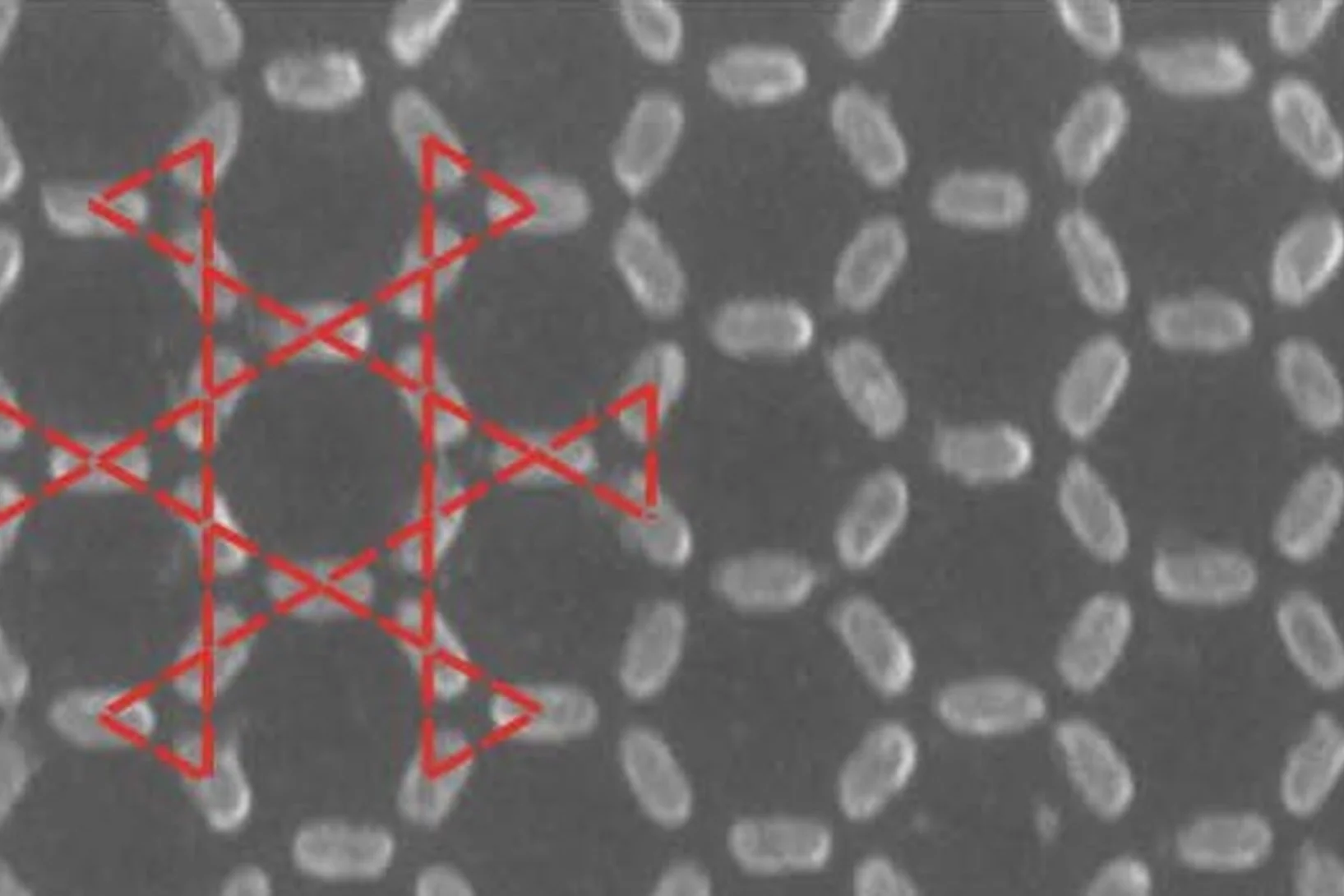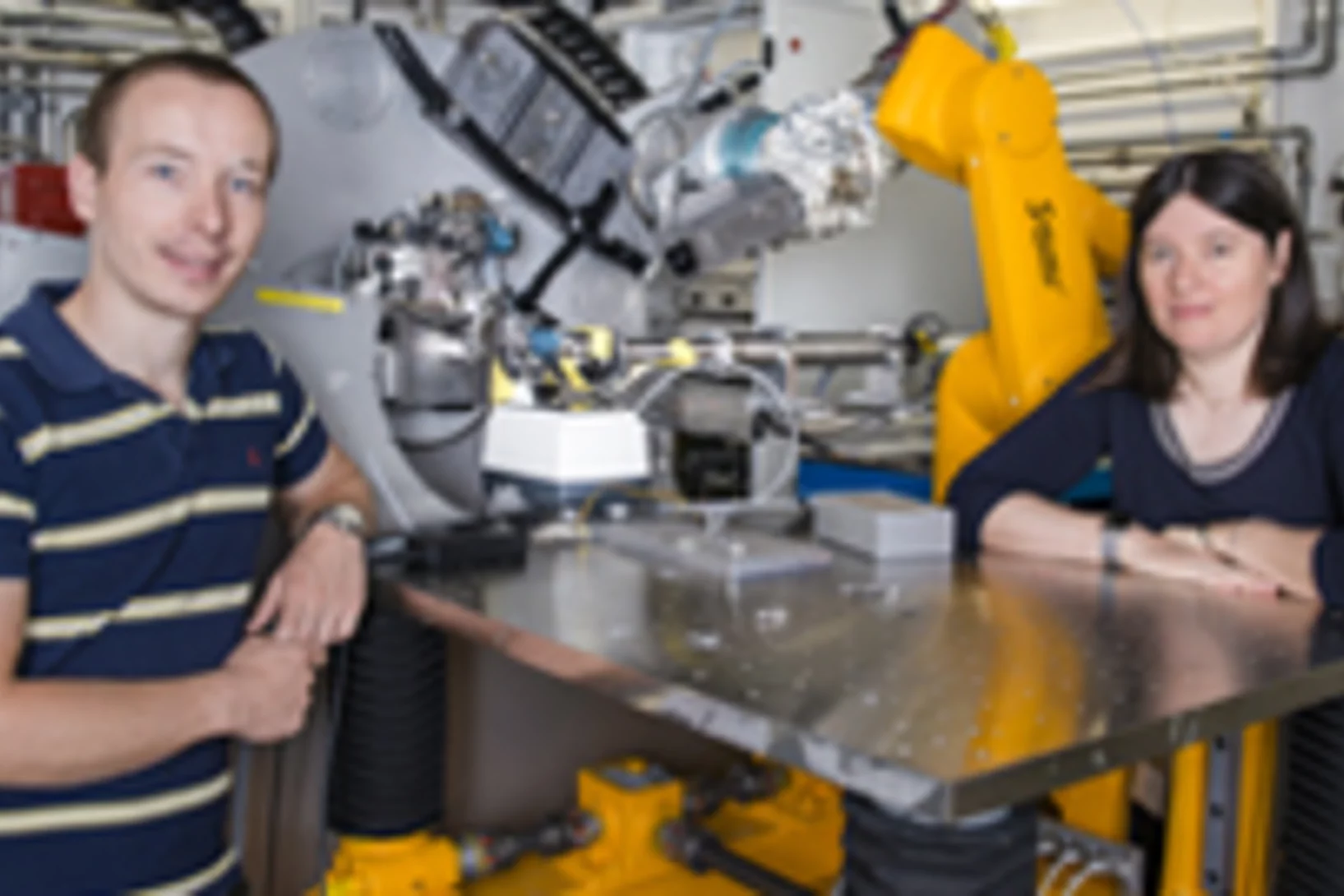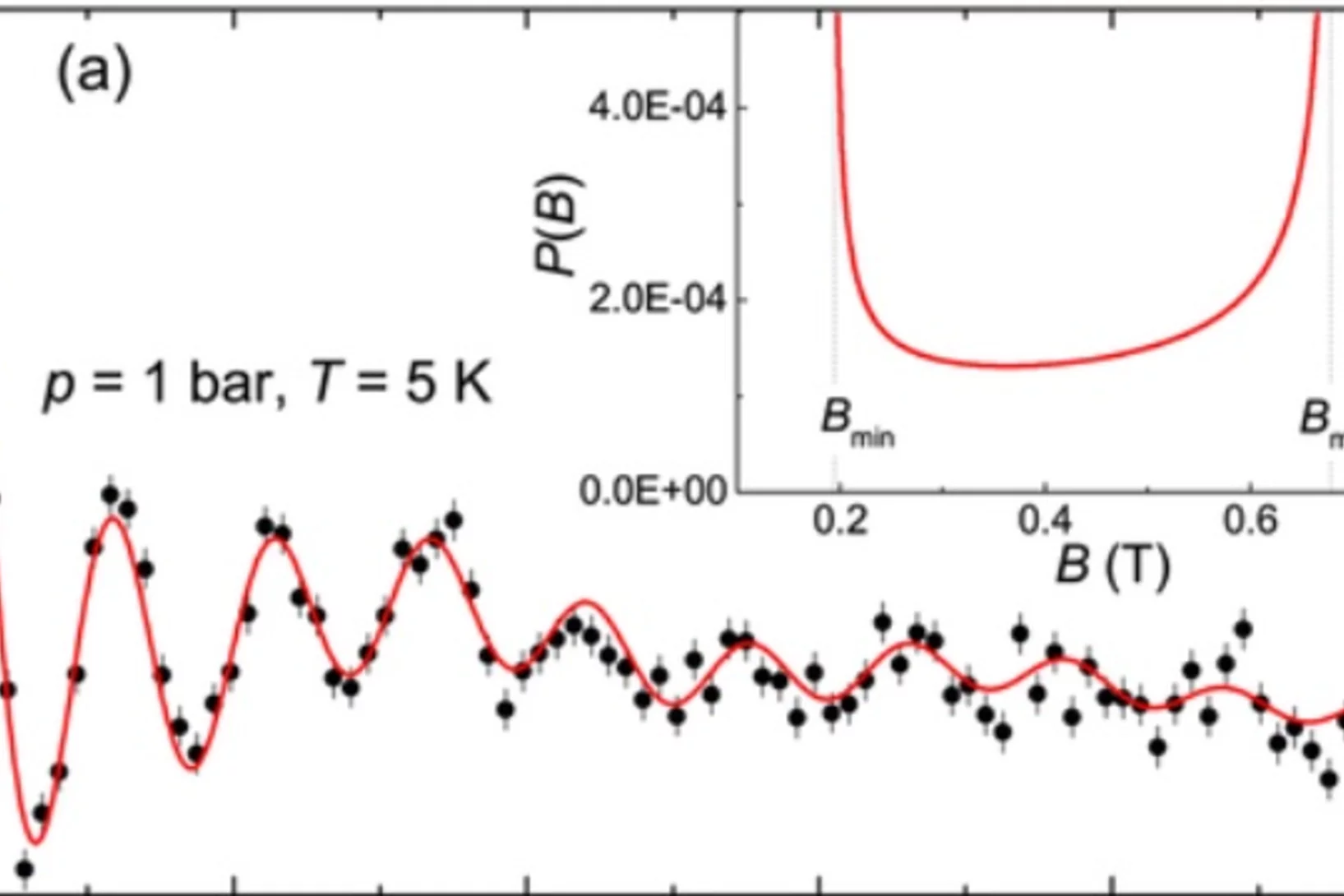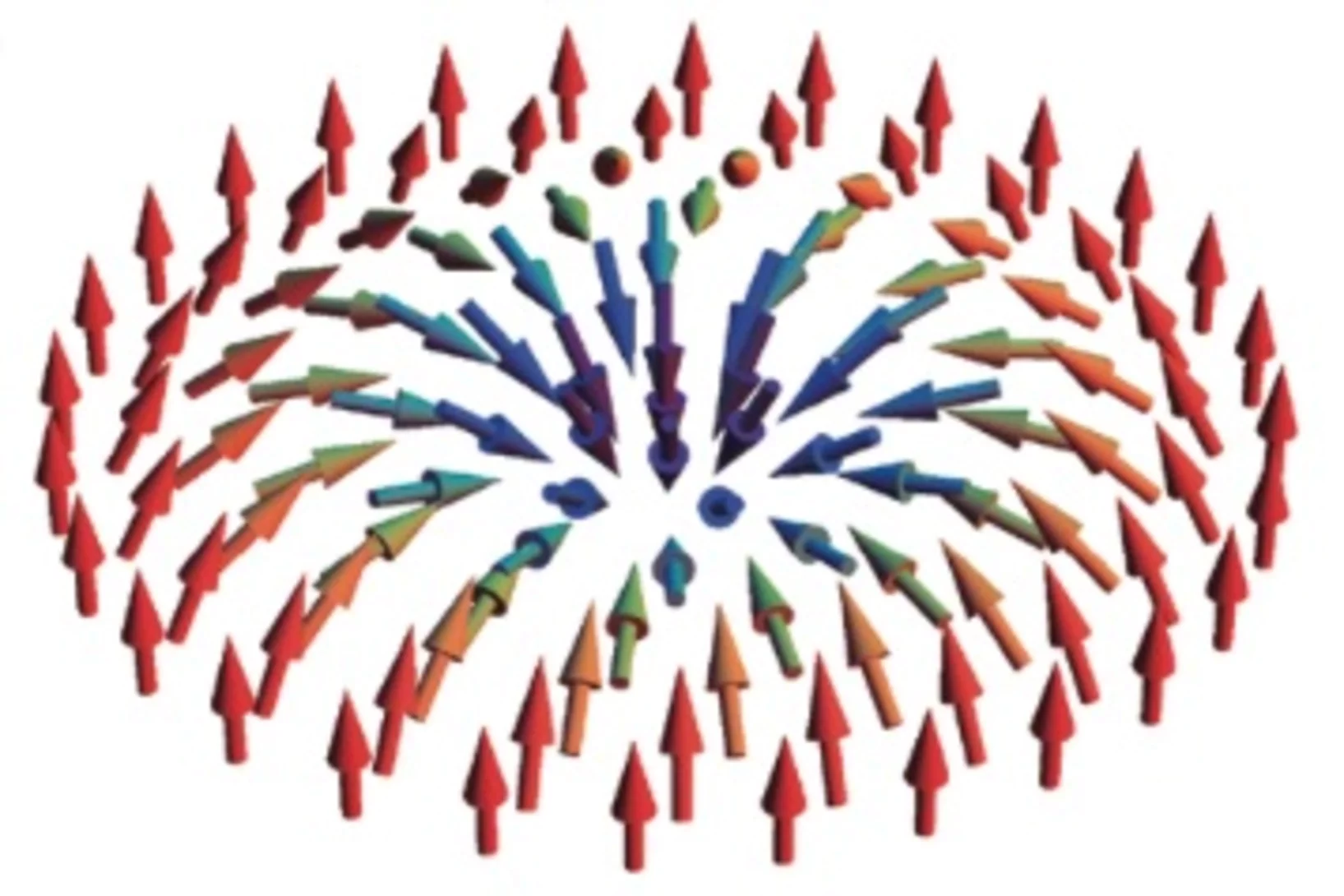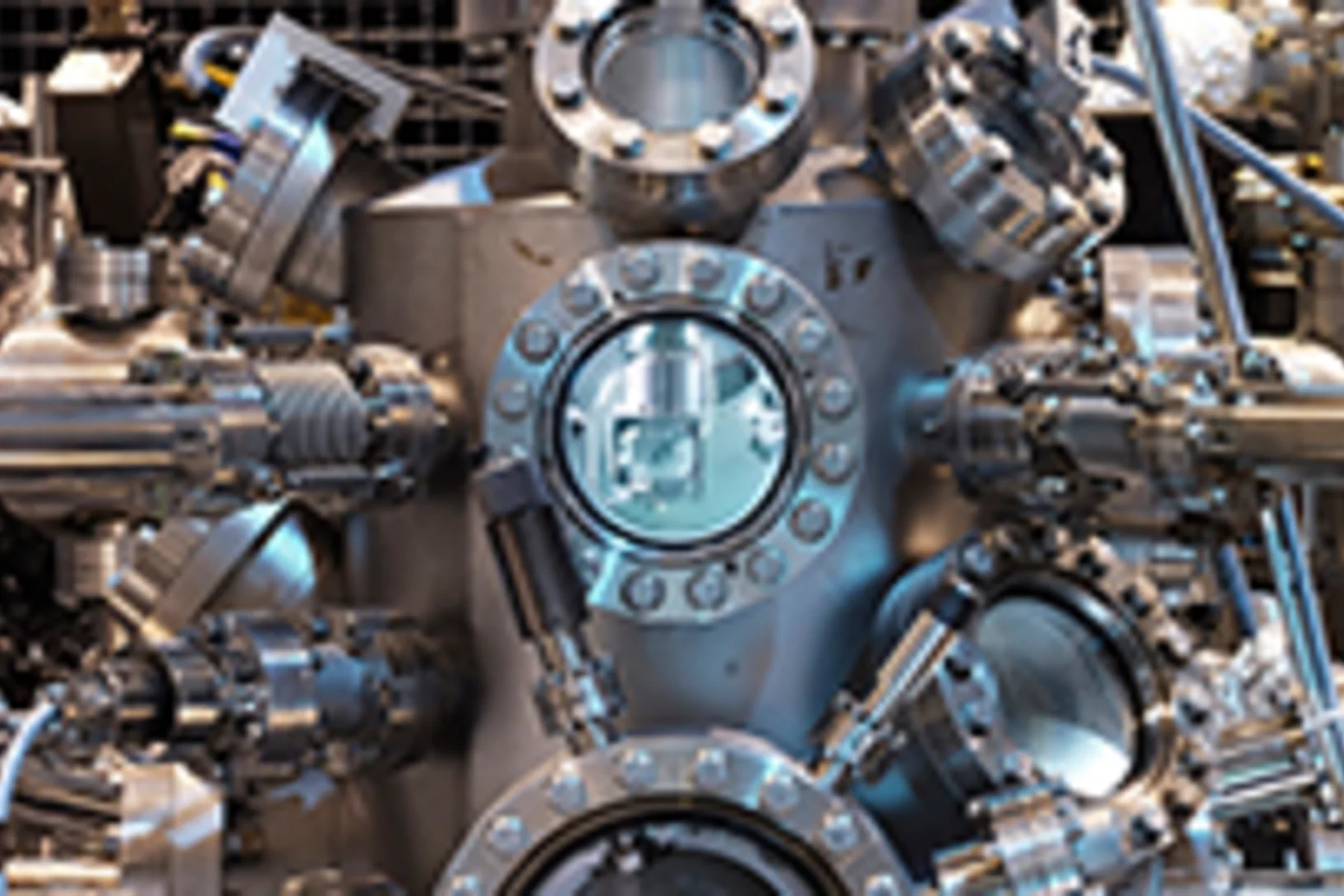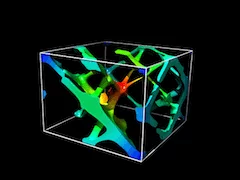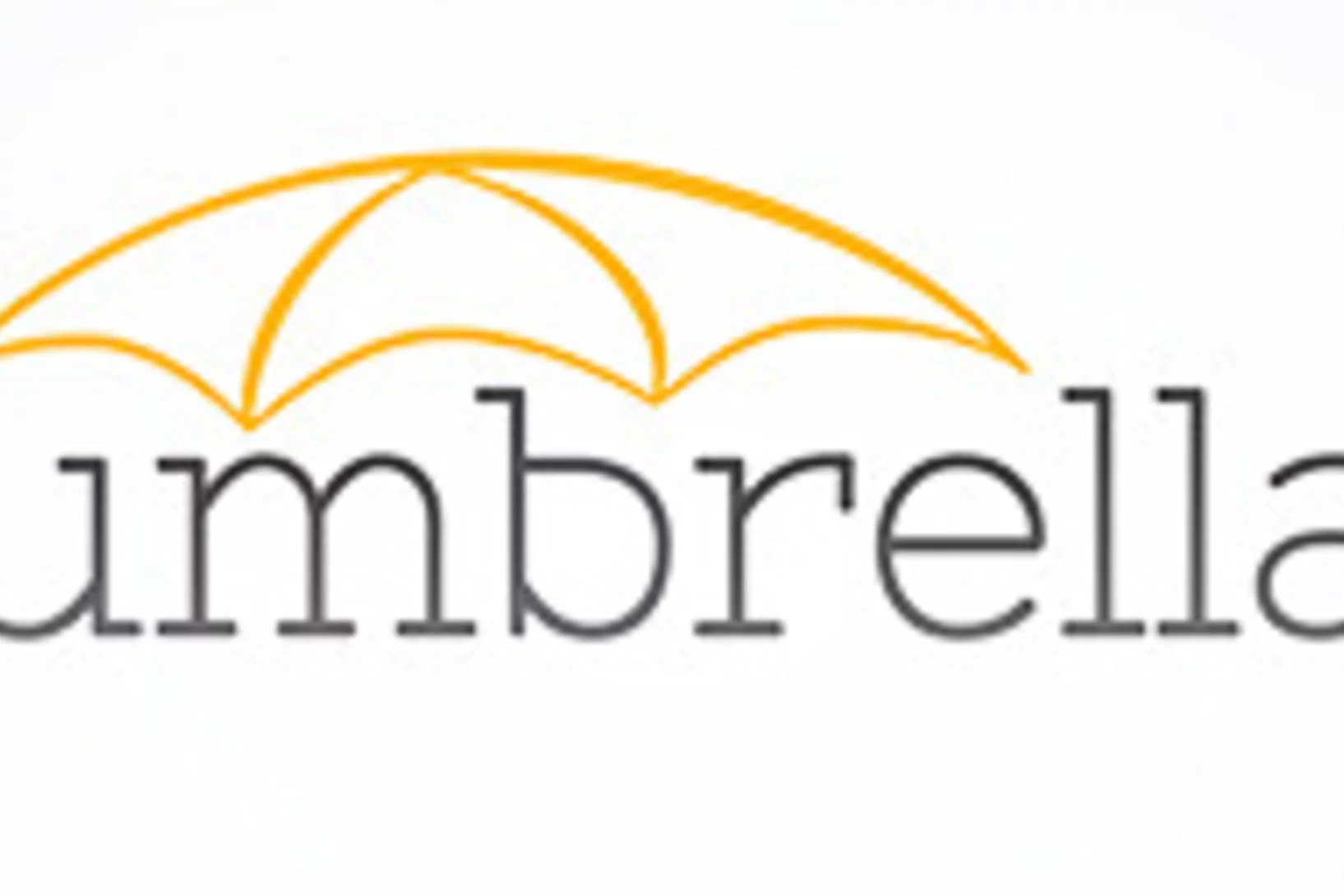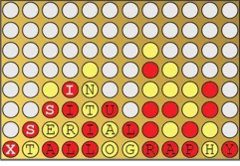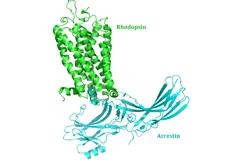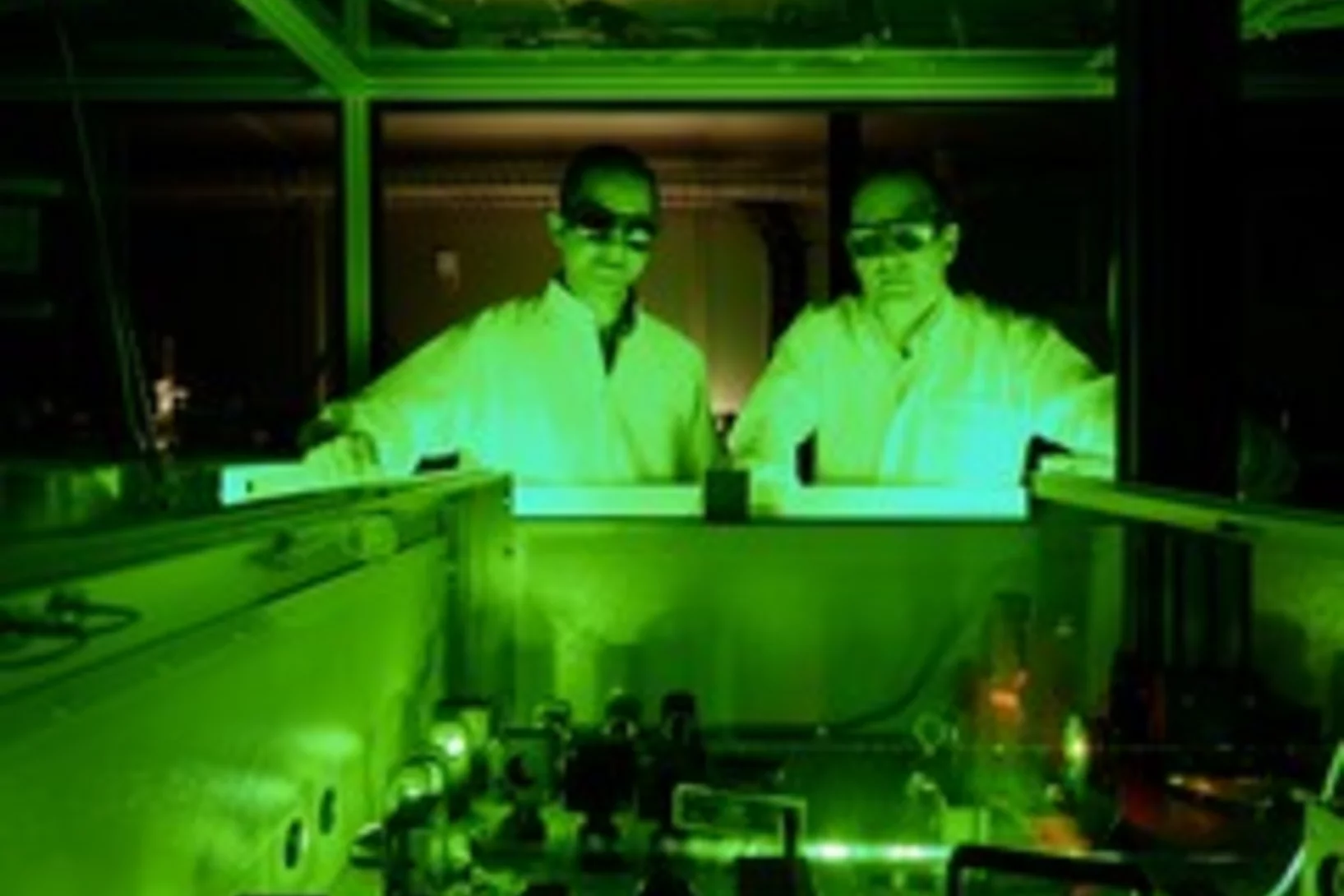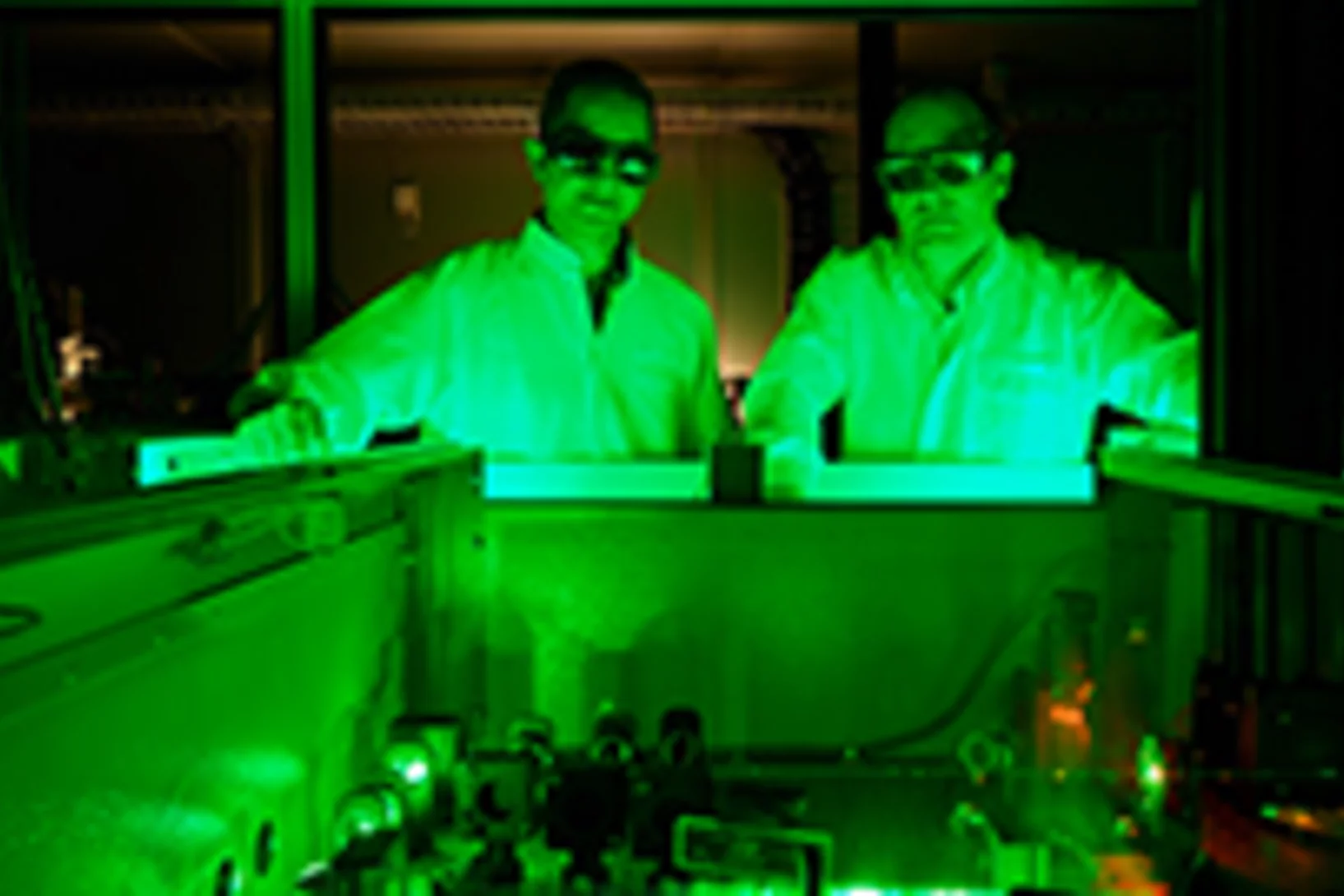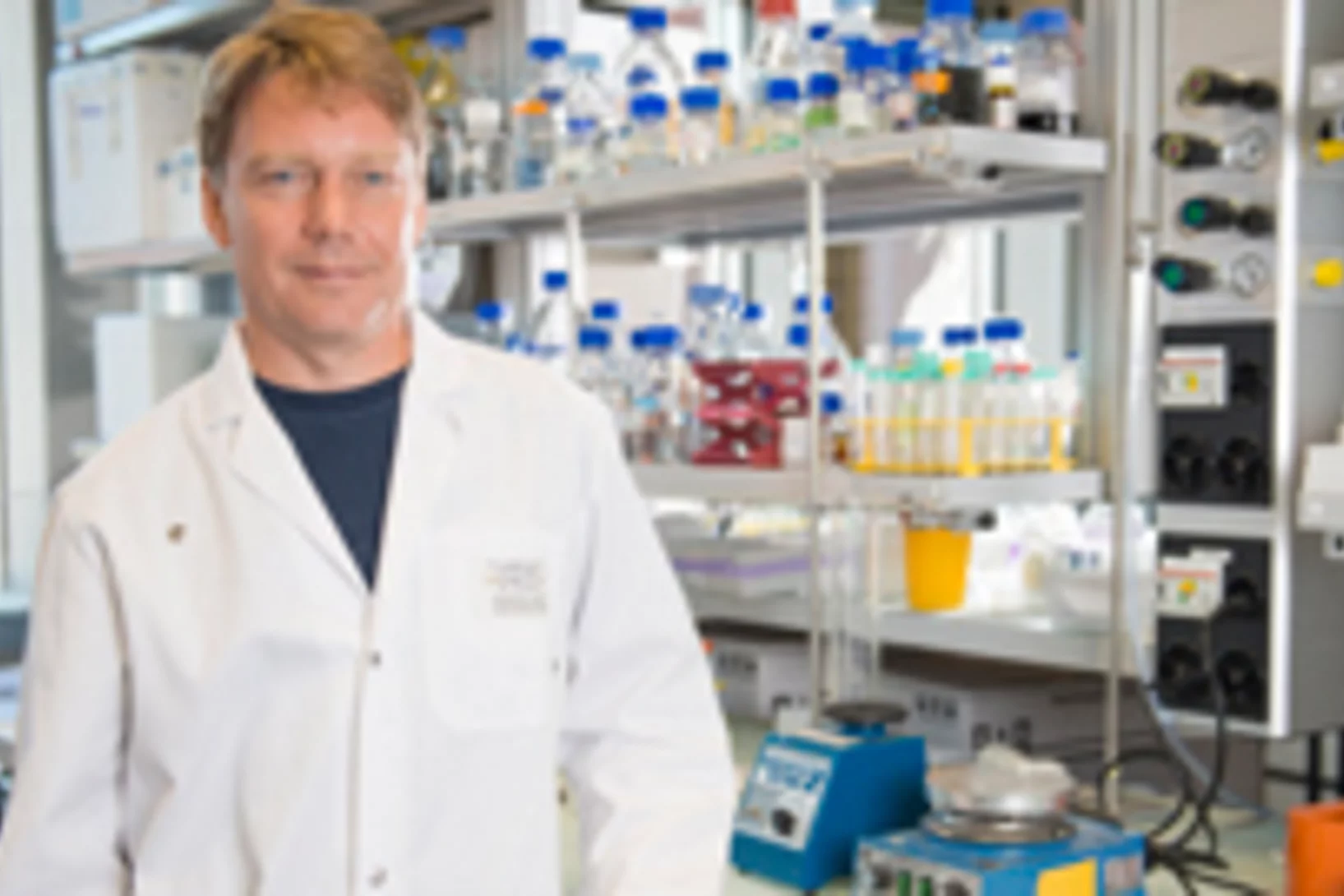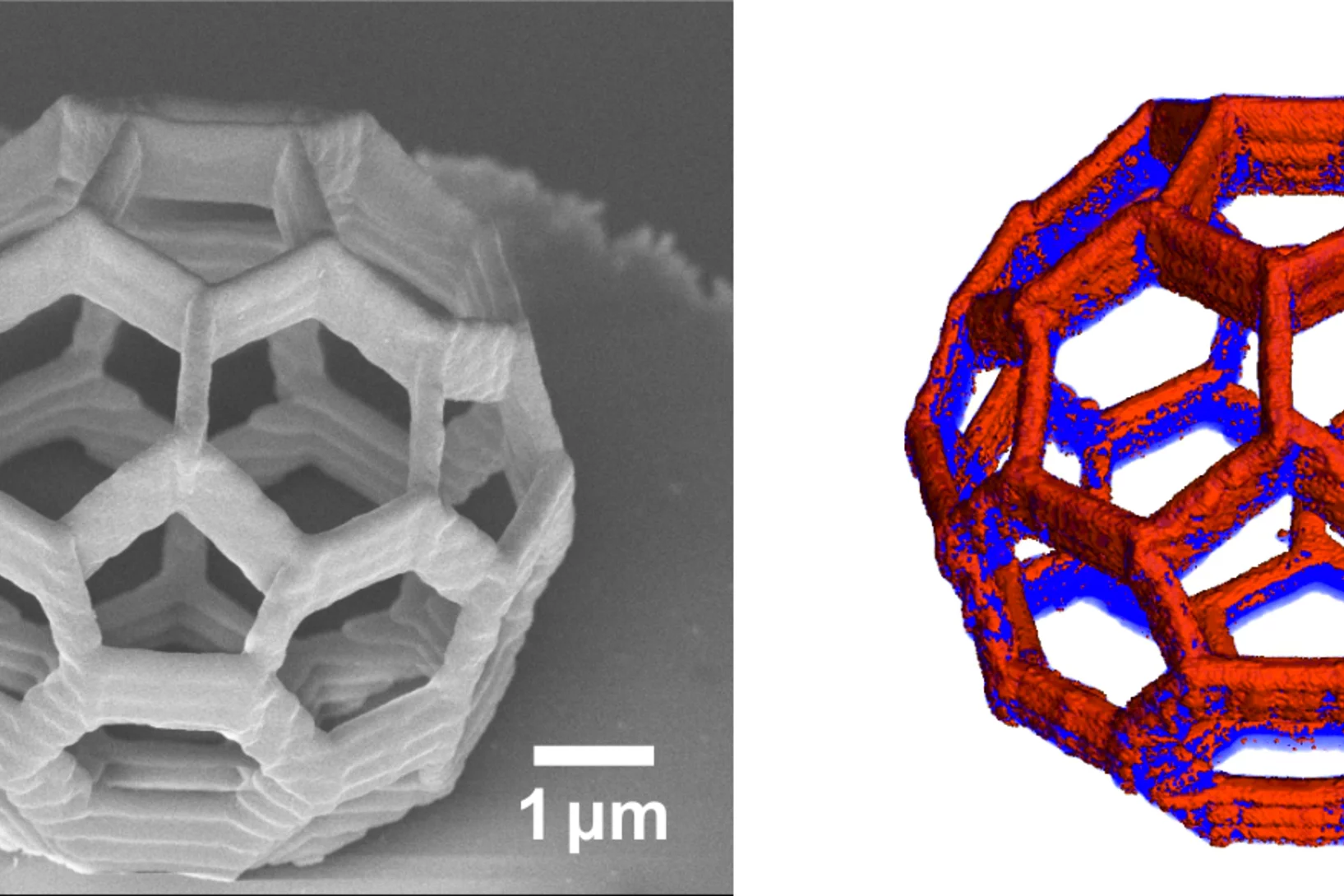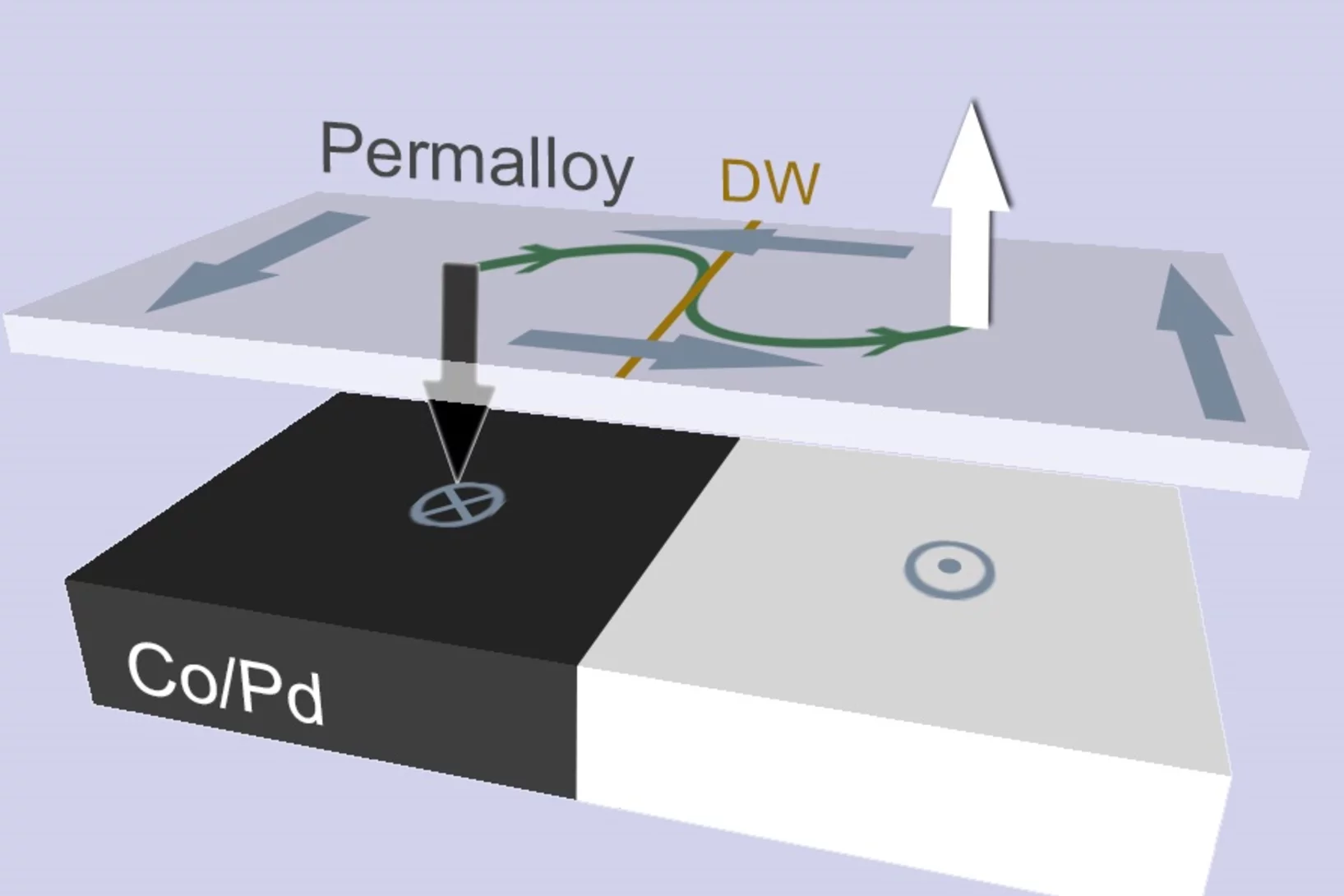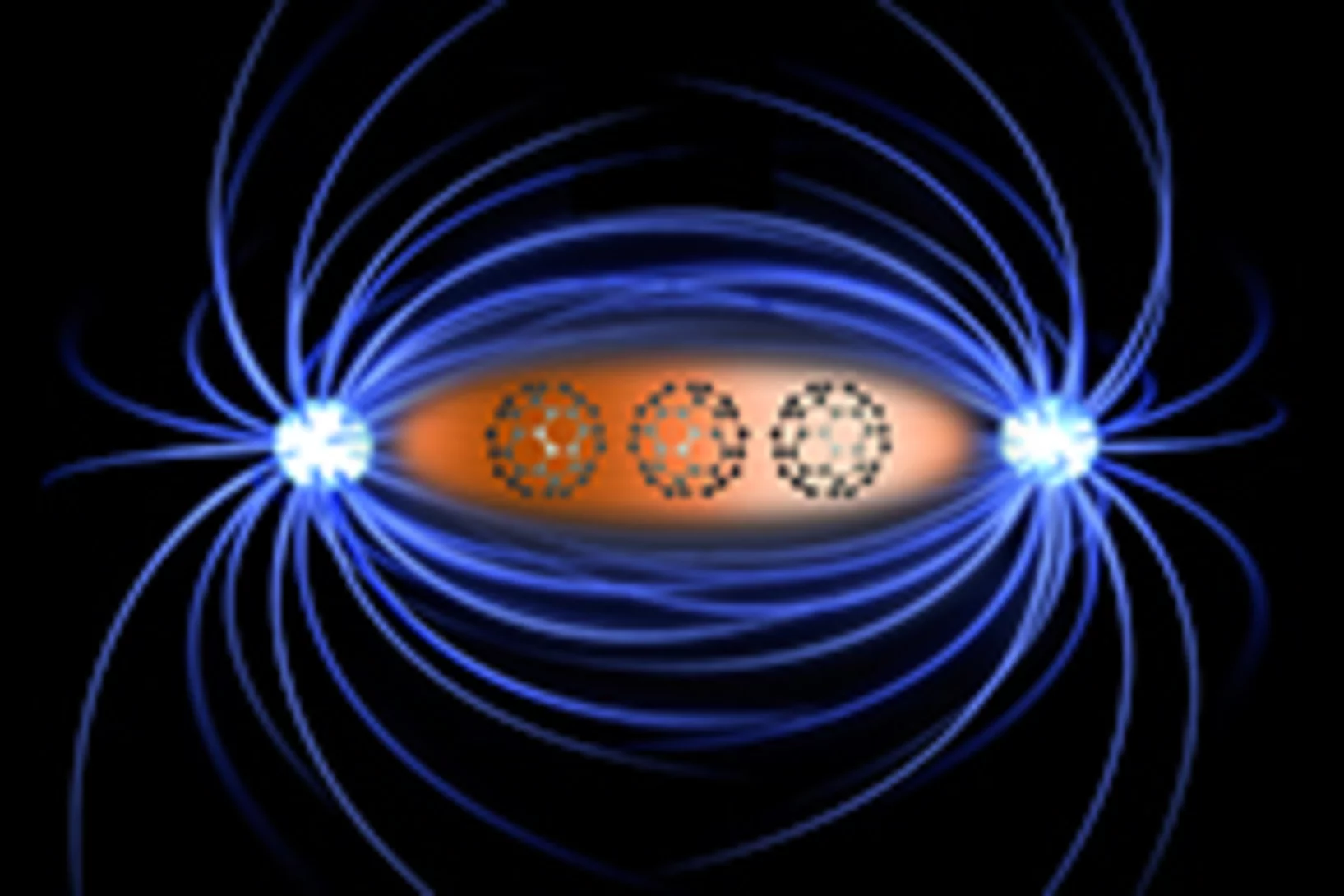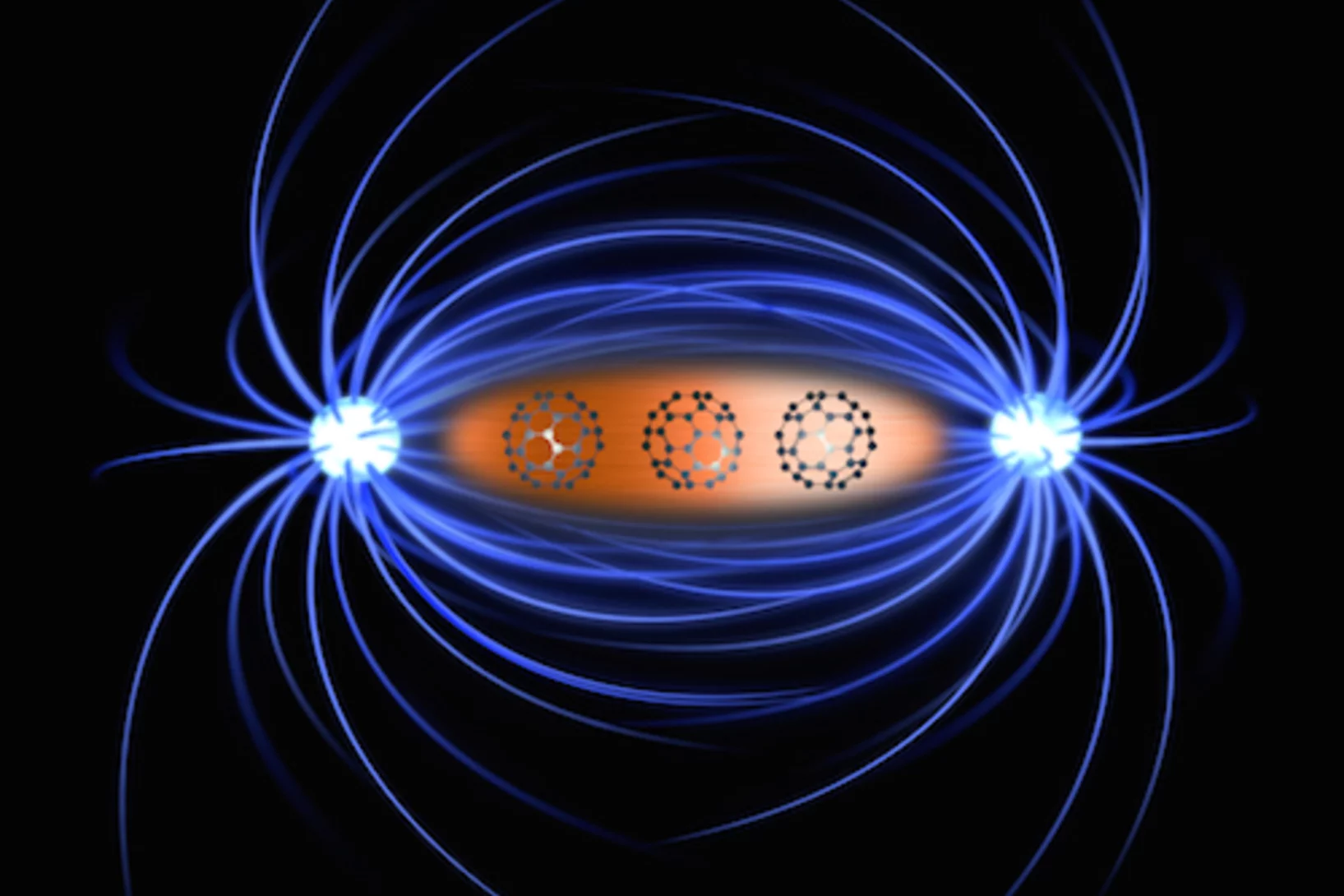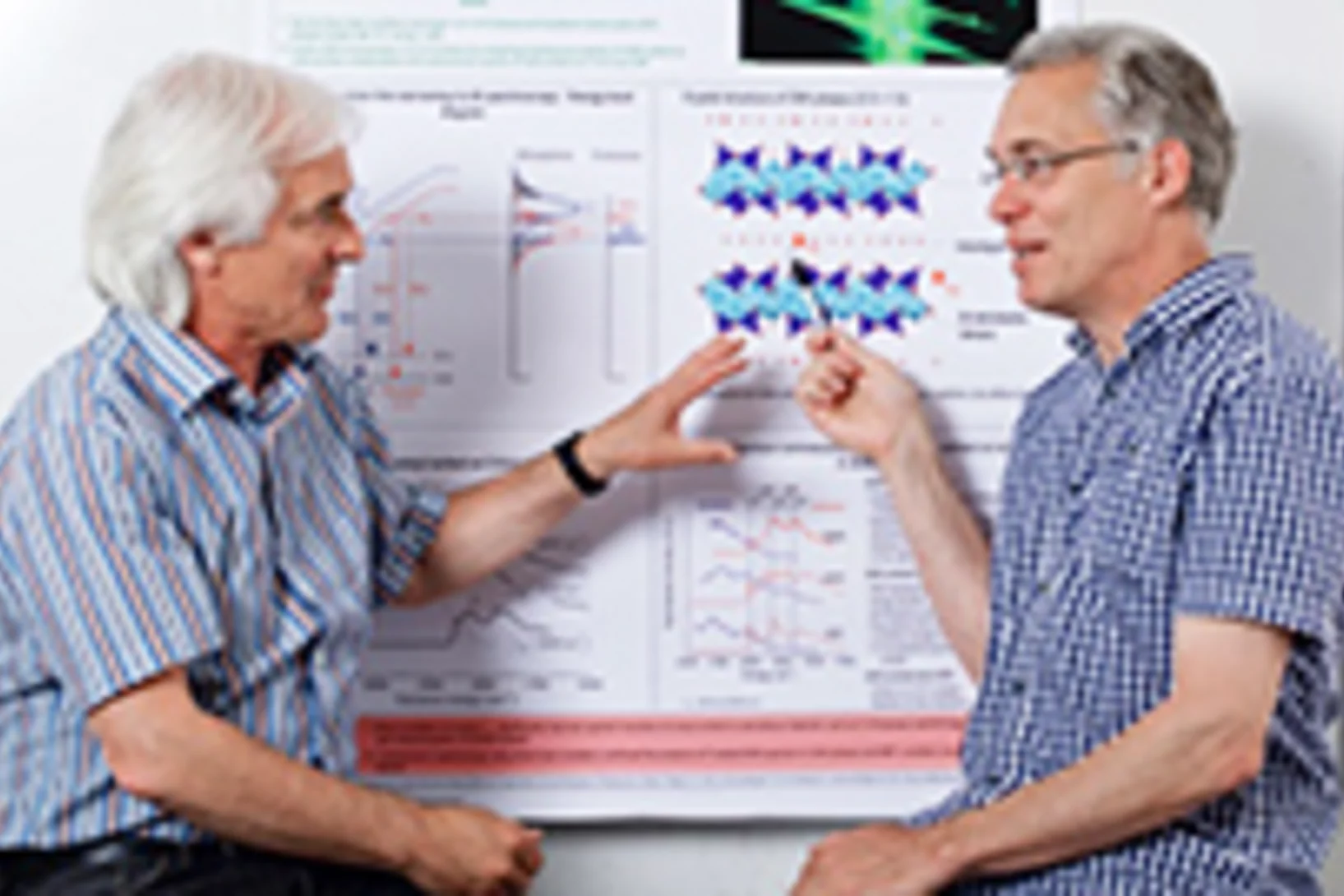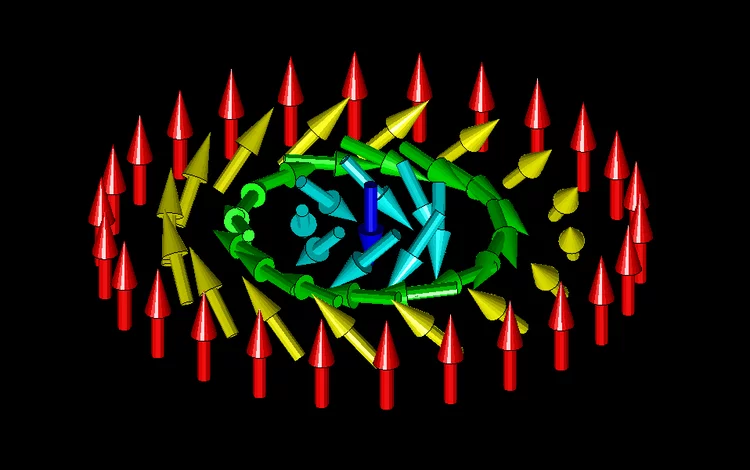Abkehr von der Kernenergie, Ausbau von Solar- und Windkraft, Energiegewinnung aus Biomasse, Senkung des Energieverbrauchs. Bis 2050 soll die Schweiz klimaneutral werden. Ein ehrgeiziges Ziel, welches durch die zunehmend herausfordernde geopolitische Lage dringlicher denn je geworden ist. Wie lässt sich in den nächsten Jahren eine nachhaltige und widerstandsfähige Energieversorgung für die Schweiz aufbauen? Wie können erneuerbare Energien optimal genutzt werden? Welche neuen Technologien sind besonders vielversprechend? Am PSI suchen Forschende nach Antworten auf diese entscheidenden Fragen.
Robuster dank Abweichungen
Mikroskopische Abweichungen von der idealen Struktur machen den KKW-Brennstoff Urandioxid widerstandsfähiger gegen Strahlungsschäden.
2015 Otto Kratky award
Marianne Liebi was awarded the 2015 Otto Kratky award by the Helmholtz-Centre Berlin for excellence in the field of small-angle X-ray scattering (SAXS) analysis. The award was bestowed in the last SAS2015 conference in Berlin. Marianne is a postdoctoral fellow in the coherent X-ray scattering group (CXS) in PSI, carrying out research in scanning SAXS measurement and analysis in 2D and 3D. Image credit ©HZB/Michael Setzpfandt
Remotely induced magnetism in a normal metal using a superconducting spin-valve
Superconducting spintronics has emerged in the past decade as a promising new field that seeks to open a new dimension for nanoelectronics by utilizing the internal spin structure of the superconducting Cooper pair as a new degree of freedom. Its basic building blocks are spin-triplet Cooper pairs with equally aligned spins, which are promoted by proximity of a conventional superconductor to a ferromagnetic material with inhomogeneous macroscopic magnetization.
Neue Methode wird bisher genaueste Vermessung von Neutronen ermöglichen
Unser Universum besteht aus deutlich mehr Materie, als sich mit bisherigen Theorien erklären lässt. Dieser Umstand ist eines der grössten Rätsel der modernen Wissenschaft. Ein Weg, diese Unstimmigkeit zu klären, führt über das sogenannte elektrische Dipolmoment des Neutrons. Forschende am PSI haben in einer internationalen Zusammenarbeit eine neue Methode entwickelt, die helfen wird, dieses Dipolmoment genauer als je zuvor zu bestimmen.
Perfekte Strahllinien merkt man nicht
Interview mit Luc PattheyLuc Patthey ist für das Design und die Umsetzung der Strahllinien für den Freie-Elektronen-Röntgenlaser SwissFEL verantwortlich. Im Interview erklärt er, welche Anforderungen die Strahllinien erfüllen müssen, damit die vom SwissFEL erzeugten Röntgenlichtpulse in der optimalen Form zu den Experimenten gelangen und welche Rolle Kooperationen bei der Entwicklung von Strahllinien spielen.
Wasserkanäle machen Brennstoffzellen effizienter
Forschende des Paul Scherrer Instituts PSI haben im Labor ein Beschichtungsverfahren entwickelt, das die Effizienz von Brennstoffzellen erhöhen könnte. Das für die Massenproduktion geeignete Verfahren haben die PSI-Wissenschaftler bereits zum Patent angemeldet.
Laser arrival time measurement and correction for the SwissFEL lasers
To probe ultrafast processes at SwissFEL it is crucial that the pump laser, used at the end stations, arrives in time with the generated X-ray pulses. For fs resolution pump probe experiments a path-length change of few-hundred nanometers already affects the measurement quality. The length of SwissFEL and the total propagation path of the pump laser light to the experiment is in the scale of several hundred meters, which makes this task challenging.
Thermodynamic phase transitions in a frustrated magnetic metamaterial
Materials with interacting magnetic degrees of freedom display a rich variety of magnetic behaviour that can lead to novel collective equilibrium and out-of-equilibrium phenomena. In equilibrium, thermodynamic phases appear with the associated phase transitions providing a characteristic signature of the underlying collective behaviour.
Winzige Magnete imitieren Dampf, Wasser und Eis
Aus einer Milliarde winziger Magnete haben Forschende am Paul Scherrer Institut PSI ein künstliches Material erschaffen, ein sogenanntes Metamaterial. Überraschenderweise zeigt sich nun, dass seine magnetischen Eigenschaften sich je nach Temperatur ändern, so dass es verschiedene Zustände einnehmen kann; ähnlich wie Wasser einen gasförmigen, flüssigen und festen Zustand hat.
Der Schlüssel für schnelles Aufladen einer Lithiumionen-Batterie
Lithiumeisenphosphat-Batterien sind sehr langlebig und lassen sich relativ schnell aufladen. Forschende des Paul Scherrer Instituts PSI, der ETH Zürich und der Forschungs- und Entwicklungslabore von Toyota zeigen in einer neuen Studie die Gründe für diese Eigenschaften. Die Erkenntnisse wurden möglich dank Messungen mit einer neuen Methode an der Synchrotron Lichtquelle Schweiz SLS des PSI.
Pressure-induced electronic phase separation of magnetism and superconductivity in CrAs
The recent discovery of pressure (p) induced superconductivity in the binary helimagnet CrAs has raised questions on how superconductivity emerges from the magnetic state and on the mechanism of the superconducting pairing. In the present work the suppression of magnetism and the occurrence of superconductivity in CrAs were studied by means of muon spin rotation.
Néel-type skyrmion lattice with confined orientation in the polar magnetic semiconductor GaV4S8
Following the early prediction of the skyrmion lattice (SkL) - a periodic array of spin vortices - it has been observed recently in various magnetic crystals mostly with chiral structure. Although non-chiral but polar crystals with Cnv symmetry were identified as ideal SkL hosts in pioneering theoretical studies, this archetype of SkL has remained experimentally unexplored.
Auf der Suche nach dem kleinsten Bit
Für immer kompaktere Speichermedien der Zukunft müssen magnetische Bereiche – die Speicherbits – immer kleiner werden. Doch wie klein kann ein Magnet überhaupt werden? Frithjof Nolting und seine Kollegen erforschen am Paul Scherrer Institut PSI den Nanomagnetismus.
Lattice dynamics of α-cristobalite and the Boson peak in silica glass
This work marks a decisive step in the solution of the longstanding problem understanding the origin of the Boson peak in silica glass. The investigation by means of diffuse and inelastic x-ray scattering and lattice dynamics calculations from first principles allow for a direct comparison of the atomic motion in crystalline silica polymorphs and silica glass. The article was selected to illustrate the cover page of Journal of Physics: Condensed Matter, Vol. 27, Nr. 30.
Lattice dynamics of α-cristobalite and the Boson peak in silica glass
B. Wehinger et al., J. Phys.: Condens. Matter 27, 305401 (2015). This work marks a decisive step in the solution of the longstanding problem understanding the origin of the Boson peak in silica glass. The investigation by means of diffuse and inelastic x-ray scattering and lattice dynamics calculations from first principles allow for a direct comparison of the atomic motion in crystalline silica polymorphs and silica glass.
Candidate Quantum Spin Liquid in the Ce3+ Pyrochlore Stannate Ce2Sn2O7
We report the low-temperature magnetic properties of Ce2Sn2O7, a rare-earth pyrochlore. Our suscep- tibility and magnetization measurements show that due to the thermal isolation of a Kramers doublet ground state, Ce2Sn2O7 has Ising-like magnetic moments of ∼1.18 μB. The magnetic moments are confined to the local trigonal axes, as in a spin ice, but the exchange interactions are antiferromagnetic.
Umbrella MoU Signed by 14 Parties
The Memorandum of Understanding of the Umbrella Collaboration was signed by 14 parties: ALBA, DESY, Diamond Light Source Ltd, Elettra, EMBL Heidelberg, ESRF, European XFEL, HZB, ILL, Instruct Academic Services Ltd, KIT, PSI, STFC and SOLEIL.
In Situ Serial Crystallography Workshop at the SLS
The Macromolecular Crystallography group at SLS is organizing a three days workshop on in situ serial crystallography (http://indico.psi.ch/event/issx) between November 17 and 19, 2015. It will be dedicated in the presentation of a novel method facilitating the structure determination of membrane proteins, which are highly important pharmaceutical targets but are difficult to handle using 'classical' crystallographic tools. Designed for 20 Ph.D. students, postdocs and young scientists from both academia and industry, the workshop will consist of introductory lectures, followed by hands-on practicals on in meso or lipidic cubic phase (LCP) crystallization, on in situ serial crystallography data collection using a micro-sized beam and on data processing.
New insight into receptor signalling
A team of 72 investigators across 25 institutions including researchers from the Paul Scherrer Institut obtained the X-ray structure of a rhodopsinàarrestin complex, which represents a major milestone in the area of G-protein-coupled-receptor (GPCR), a protein family recognized in the award of the 2012 Nobel Prize in Chemistry.
Terahertz laser light focused to the extreme
There are limits to how short a flash of light can be – in both time and space. Researchers from the Paul Scherrer Institute (PSI) have now succeeded in reaching these physical limits and producing the smallest possible flash. To do so, they used terahertz light, which is physically related to visible light or radio waves, but differs in its wavelength.
Kleinstmöglicher Lichtblitz erzeugt
Am Paul Scherrer Institut ist es Forschenden gelungen, den kleinstmöglichen Blitz aus Terahertzlicht zu erzeugen. Damit eröffnet sich ein neuer Weg, um die Eigenschaften von Materialien zu untersuchen.
Neue Details der Reizübertragung in Lebewesen aufgedeckt
Forschende decken neue Details darüber auf, wie die Zellen von Lebewesen Reize verarbeiten. Im Mittelpunkt stehen sogenannte G-Proteine, die helfen, Reize, die von aussen bei einer Zelle ankommen, ins Zellinnere weiterzuleiten. Die Studie zeigt erstmals, welcher Teil der G-Proteine für deren Funktion entscheidend ist . Von den Ergebnissen berichten Forschende des Paul Scherrer Instituts PSI, der ETH Zürich, des Pharmaunternehmens Roche und des britischen MRC Laboratory of Molecular Biology in der jüngsten Ausgabe des Fachmagazins Nature Structural and Molecular Biology.
Element-Specific X-Ray Phase Tomography of 3D Structures at the Nanoscale
Recent advances in fabrication techniques to create mesoscopic 3D structures have led to significant developments in a variety of fields including biology, photonics, and magnetism. Further progress in these areas benefits from their full quantitative and structural characterization.
Nanoscale switch for vortex polarization mediated by Bloch core formation in magnetic hybrid systems
Vortices are fundamental magnetic topological structures characterized by a curling magnetization around a highly stable nanometric core.
Magnete aus unmagnetischen Metallen
Ein international zusammengesetztes Forschungsteam hat zum ersten Mal gezeigt, wie man von Natur aus unmagnetische Metalle wie etwa Kupfer magnetisch machen kann. Die Entdeckung könnte helfen, neuartige Magnete für unterschiedlichste technische Anwendungen zu entwickeln. Messungen, die für das Verständnis des Phänomens entscheidend waren, wurden am PSI durchgeführt. Nur hier lassen sich magnetische Vorgänge im Inneren von Materialien in dem nötigen Detail untersuchen.
Beating the Stoner criterion using molecular interfaces
Only three elements are ferromagnetic at room temperature: the transition metals iron, cobalt and nickel. The Stoner criterion explains why iron is ferromagnetic but manganese, for example, is not, even though both elements have an unfilled 3d shell and are adjacent in the periodic table: according to this criterion, the product of the density of states and the exchange integral must be greater than unity for spontaneous spin ordering to emerge.
Evidence for Coexistence of Bulk Superconductivity and Itinerant Antiferromagnetism in the Heavy Fermion System CeCo(In1−xCdx)5
In the generic phase diagram of heavy fermion systems, tuning an external parameter such as hydrostatic or chemical pressure modifies the superconducting transition temperature. The superconducting phase forms a dome in the temperature-tuning parameter phase diagram, which is associated with a maximum of the superconducting pairing interaction. Proximity to antiferromagnetism suggests a relation between the disappearance of antiferromagnetic order and superconductivity.
Radioaktive Abfälle in der Zementfalle
Schwach- und mittelaktive nukleare Abfälle bleiben in einem geologischen Tiefenlager über mehrere Tausend Jahre in Zementmaterialien verpackt. Forschende des Paul Scherrer Instituts und des Karlsruher Instituts für Technologie haben nun gezeigt, wie Zement die Bewegungsfreiheit der radioaktiven Substanzen einschränkt. Das verbessert das Verständnis der Prozesse, die in dieser ersten Phase der Tiefenlagerung ablaufen werden.
Protonen gegen Tumore
Interview mit Damien Charles WeberDamien Charles Weber ist seit 2013 Leiter und Chefarzt des Zentrums für Protonentherapie, dem einzigen Zentrum dieser Art in der Schweiz. In diesem Interview spricht er über die Erfolge der Protonentherapie bei der Krebsbehandlung und die Ziele, die für die nächsten Jahre in diesem Bereich anvisiert sind.
A new class of chiral materials hosting magnetic skyrmions beyond room temperature
Magnetic skyrmions are tiny, magnetic-spin vortices that can emerge in magnetic materials. Due to their nanometric size, skyrmions could be used to build extremely high density memory spintronics devices. However, stable skyrmions are not easy to find and control, and are usually only observed well below room temperature.

